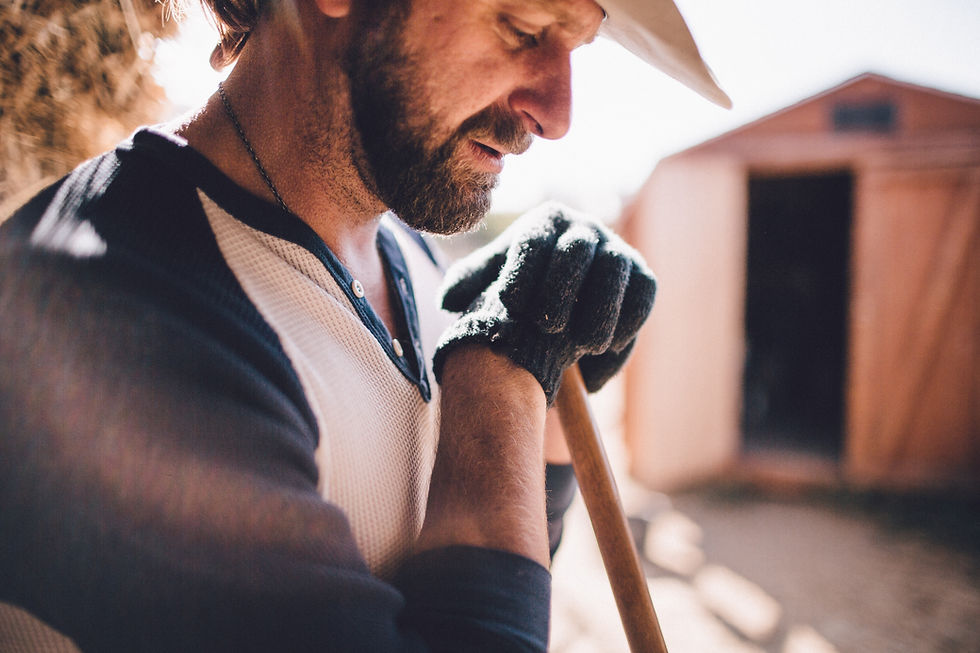DAILY WILDLIFE NEWS
Join our mailing list to never miss a post

Hazel Townshend
25 Sept 2024
The EU's chief climate scientist states that unless the agricultural sector pays for its greenhouse gas emissions we will fail to meet 2040 net zero targets.
In February, the European Commission confirmed their plans for a 90% reduction in greenhouse gas (GHG) emissions by 2040 to set the course for net zero in 2050. Despite being on the right trajectory, the continent is far from meeting its targets and requires further regulations and measures to meet these targets.
The chief's solution
Ottmar Edenhofer, EU Chief climate scientist said that in order to meet 2040 targets the EU needs to cut CO2 emissions by 171 megatonnes a year and we must accelerate carbon removal technologies to achieve this.
Carbon capture involves extracting CO2 gas from industrial processes and injecting it in geological formations under the earth where its is stored in rock. This is an expensive, labour intensive and lengthy process that does not prevent GHG pollutants but removes some of them from the atmosphere until more are released.

Edenhofer also addressed the impact of agriculture and suggested the EU charges farmers tax on their GHG emissions as a legislative solution. As agriculture contributes to 12% of the EU's emissions and 8.5% globally it seems plausible to want to cut them down. However, it is important to consider the impact on the livelihoods of people in the agricultural sector.
Has it already began?
In June, Denmark confirmed that farmers will be charged 120 DDK (£13.45) per tonne of CO2 from 2030 and a further 180 DDK (£33.62) from 2035. A 60% deduction (tax break) will be applied for climate efficient farmers to encourage sustainable food production.
Starting in 2028, Danish farms that do not participate in peatland restoration (an effective carbon sink) will be taxed accordingly. These measures are predicted to cut Denmark's carbon emissions by 1.8 million tonnes in the first year of operation .

Will it be effective elsewhere?
The European Environmental Agency (EEA) has already predicted a 4% decline in agricultural by 2030 which will increase to 8% once planned measures are implemented. However, this reduction is relatively small and unsustainable since 20% of farming emissions need to be slashed in order to meet the 2040 target.
Agricultural GHG emissions have risen more than 20% in countries including Estonia, Latvia and Bulgaria since 2005 and therefore must be the EUs priority. Although, Greece has experienced a 12% decline it does require new measures to prevent a predicted major increase in emissions say the EEA.
How will it impact farmers?
With 2024 being Europe's hottest summer on record due to global warming, farmers suffered immense crop stress affecting their yield. There was also a regional precipitation increase causing extreme flooding and agricultural damage in parts of the UK, Slovakia, Hungary, Czechia, and Iceland, where they experienced 240% of their annual rainfall.
Extreme weather events like these will continue to cause financial instability for farmers and effect Europe's food production as long as climate change remains a threat. Additionally, the European parliament revealed that 60% of its soils are unhealthy as a result of climate stress and overexploitation, further affecting yields.

In 2022, the EU did confirm a £450 million agricultural reserve but this funding only covers farmers affected by the market and not the climate crisis. Whilst they continue to experience the ever increasing impacts of climate change, it is hard to justify digging further into their pockets for the carbon tax.
Transitional aid: a promising solution?
The Institute for European Environmental Policy (IEEP) suggests that providing transitional aid for farmers looking to convert to climate efficient farming will keep GHG emissions to a minimum.
Sustainable farming requires more upfront costs but less long-term maintenance costs. Some studies have even it has increased resilience to extreme weather. Although it requires more labour and poses a greater risk of yield uncertainty, it is known to be more profitable in the long term.

If the government can provide transitional aid for agricultural operations to allow full conversion to this style of farming then this may be the most effective solution. Combining this with an initial CO2 tax, like that of Denmark, which is then lowered once the transition is complete will make many farmers inclined to switch to sustainable farming.
Sustainability
It is important to understand that environmental sustainability cannot be restored without considering social and economical sustainability, its a package deal. If we do not consider the livelihoods and financial stability of farmers then we cannot begin to resolve the climate crisis.

It is also crucial that environmental political figures and climate scientists keep a good relationship with the farming community to encourage people to cooperate in green schemes and policies.

Expand your horizons
Check out our blog and get inspired by the incredible work in the natural sciences coordinated by women. Then, learn how to replicate their success with tips and tricks.
